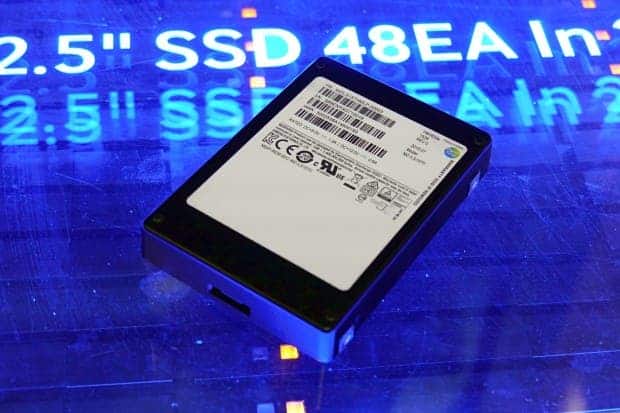In a leap of innovation, Samsung unveiled its largest storage unit ever: a 15.36TB flash drive which uses 256GB NAND flash as the basis for the storage. The hard drive is 60% bigger than its closest competitor and all that storage is packed inside a tiny 2.5-inch SSD case – and yes, I prefer to still call it a hard drive even though there aren’t any motors, pivots or arms. Deal with it.

So, the hard drive is called PM1633a, an unfitting name for such a sexy gear. At the Flash Memory Summit in California, though, Samsung referred to its product as JBOF, for “just a bunch of flash. At the convention, the HDD was stacked in 48 other units inside a server. Combined the server can store 770 TBs which is quite a bit more than most server can handle over the same surface area. What’s JBOF’s secret? Details are very sketchy at this point, but Ars Technica reports the Korean researchers were able to increase storage capacity considerably by stacking transistors vertically. How in the world they’ve managed to solve heating issues and cram all those transistors in 2.5-inch case is beyond me at this point.
Now word on the price yet, but considering a 1TB enterprise SSD costs around $1,000 you can expect the price tag to be quite hefty.
Was this helpful?



